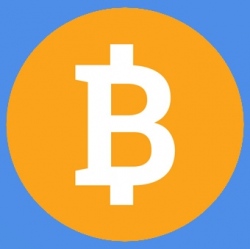
A metaverse, which is a portmanteau of the prefix “meta” (meaning beyond) and “universe,” describes the concept of a future internet, a 3D virtual experience. As a collective virtual shared space, the metaverse might be seen as the sum of virtual worlds, augmented reality and the internet.
Concepts of such virtual environments have been a long-lasting, and much discussed, concept.
For instance, Neal Stephenson’s 1992 novel, Snow Crash, introduces the concept of a Metaverse, which was marked by a convergence of the physical and virtual worlds. ‘There’ was created in 1998, users of which would appear as avatars on There.com. They could socialize and purchase objects and services using the virtual currency ‘therebucks’, which were bought with real world money. There have been many other iterations of virtual currencies in virtual reality. Eve, Wow and Minecraft are all online games which have incorporated virtual currencies.
The San Diego-based virtual reality and blockchain startup, Matryx, believes virtual currency in virtual reality is possible today due to cryptocurrency.
“Virtual worlds and virtual currencies naturally fit together,” says Matryx CEO Steve McCloskey, whose firm is developing a blockchain-based virtual reality collaboration platform targeting STEM. “We see blockchains and cryptocurrencies as providing a system where the real world and virtual world meet.”
The VR and blockchain transcending company’s open-source platform is a fabric of bounty systems, a library of digital assets, and a marketplace. By creating a standard for collaboration using blockchain technology (the company currently uses Ethereum and ERC20 tokens), Matryx believes it can keep an immutable ledger of IP and transferable value.
“With an in-software economy on a virtual reality platform, there must be a way for participants to transact between each other on an immutable ledger,” says McCloskey, who believes cryptocurrencies can incentivize universities, corporations and the crowd to work together on mankind’s most pressing scientific needs. “This ledger would also track user submissions and rewards history. Plenty of applications building design tools for virtual reality could benefit from blockchain, in terms of being able to attribute information in an ecosystem comprised of a large number of contributors.”
Convincing the two separate industries that they need each other isn’t as easy as it sounds. Matryx, which is currently conducting a token crowdsale for its native ‘MTX’, spends much of its time at both VR and blockchain conferences explaining how the two technologies go together.
“The blockchain community thinks VR is a mystery box and VR community thinks blockchain is a mystery box,” says Keita Funakawa, Matryx Chief Operations Officer. “But, these two technologies go together from a technological standpoint.”
Funakawa contends this isn’t about gluing together buzzwords, but discussing different aspects of a singular technological stack.
“Blockchains are more than just an exchange of capital, and a shared common good. When someone hears of a new blockchain, many believe it is just a faster, quantum resistant blockchain,” McCloskey says. “They ask, ‘Why is this bitcoin better than that bitcoin.’ But blockchain is applicable to every piece of the software domain, including virtual design tools. Each technology sector, indeed each industry generally, will apply it so as to improve and augment their own existing platforms.
“This is less about building your own Bitcoin-esque financial ecosystem, and more about the underlying technology to augment the platform in any other domain of software.”
